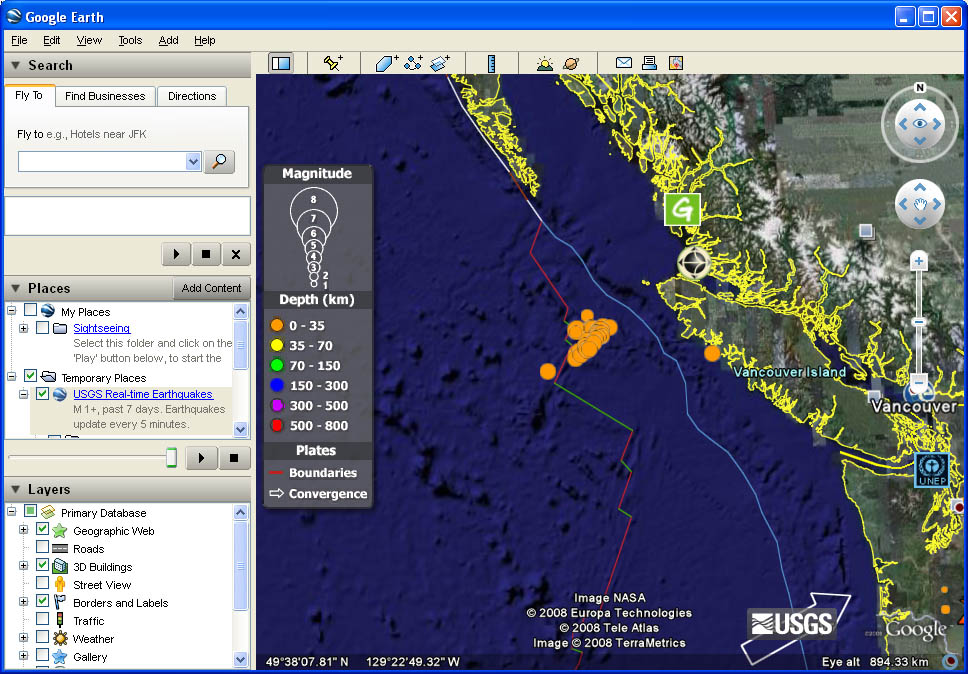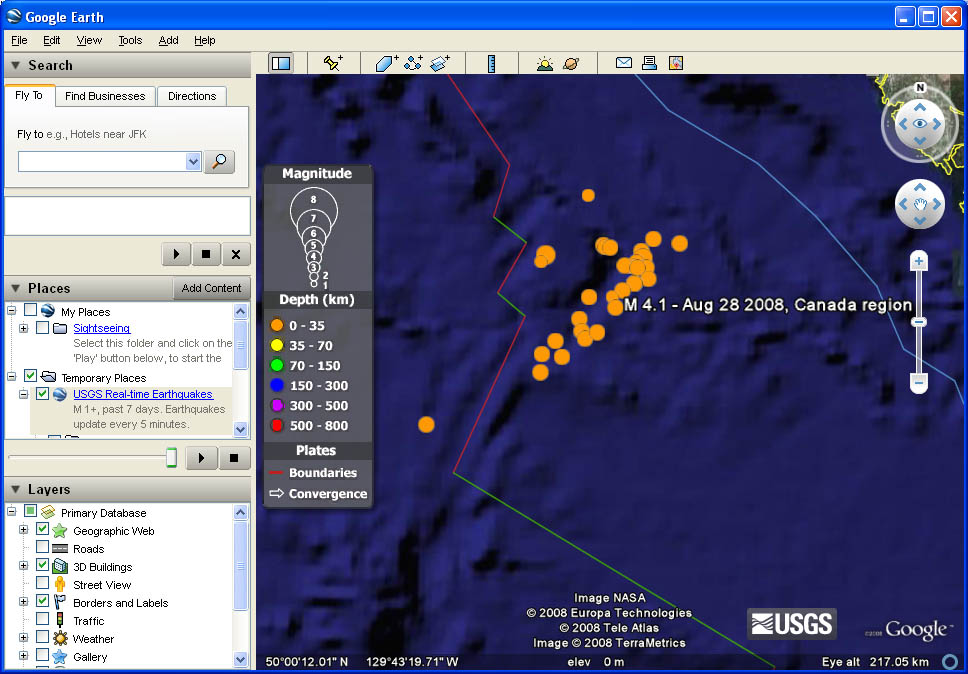Tracking Earthquakes with Google Earth
A magnitude 6.1 earthquake this morning off the coast of Vancouver Island was not felt on land, despite being the biggest yet in a swarm of quakes that have hit the region this week. This latest earthquake was reported at 5:37 this morning, centred 152 kilometres west-southwest of Port Hardy and about 10-kilometres below the ocean floor. Calls to businesses in the town so far show no one felt it, and there was no damage and no tsunami. There have been 18 quakes since Tuesday (see map below), all around the Juan de Fuca Ridge. They’ve ranged between magnitude four to five, until today’s quake. (Link)
Maybe this just shows what a geek I am, but after reading this, my first thought right after “Glad no one was hurt!” was “Let’s track this on Google Earth!” If you go to this page on the U.S. Geological Survey’s web site, you can download a KML which will display earthquake data, updated every 5 minutes. A KML is just some geographic data that Google Earth can use, and if you already have Google Earth installed, just downloading it will open it automatically. Once it opens, you will see a series of colored dots, each of which indicate earthquake activity. Corresponding times and magnitudes are available when you move the cursor over the dots.



Wow!! That’s an amazing tool! I live right on a fault line. no one ever feels anything, but apparently there are a lot of little ones-and we’re just waiting for the “big one”. I don’t know very much about earthquakes, but I was thinking how it’s weird that no one felt that BIG of an earthquake. I mean, I guess it depends on how far away it is…but anyway, just thinking about it. Thanks for sharing!
Thanks for the comment! I don’t know where you live, but in Utah there’s a LOT of little earthquakes that no one can feel. I have been hearing for the past 20 years that we’re due for a BIG quake, too. It blows me away how versatile Google Earth is. What’s interesting is that there were products like it out long before Google developed GE, including NASA’s own WorldWind: http://worldwind.arc.nasa.gov/ Google was just able to use its “star power” and open source/free software philosophy to make Google Earth one of the best products. I see weather reports and stuff even using Google Earth.
Hey! I’m from Utah! sounds like we’ve both been hearing the same rumors. Makes me pretty nervous sometimes! I’m not really surprised that Google got this going before other organizations–they definitely do have the “star power”!